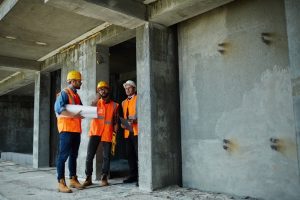The Building Warrant Of Fitness Process
 Similar to a vehicle warrant of fitness, the purpose of a building warrant of fitness is to ensure the ongoing health and safety of its occupants. On a day to day basis there a aspects of a building that regularly incur wear and tear or could potentially cause harm to occupants if they failed to work. These aspects are vital to the safe operation of the building are sometimes referred to as Life Safety Systems, or Specified Systems.
Similar to a vehicle warrant of fitness, the purpose of a building warrant of fitness is to ensure the ongoing health and safety of its occupants. On a day to day basis there a aspects of a building that regularly incur wear and tear or could potentially cause harm to occupants if they failed to work. These aspects are vital to the safe operation of the building are sometimes referred to as Life Safety Systems, or Specified Systems.
Typical examples of Specified Systems include automatic fire suppression systems like sprinklers, automatic or manual emergency warning systems for fire or other dangers, automatic doors or windows, emergency lighting systems, escape route pressurisation systems, lifts and escalators, emergency power systems and mechanical ventilation/air conditioning systems. The purpose of the Building Warrant of Fitness process is to ensure regular maintenance, testing and inspection of these Specified Systems is carried out in accordance with the legal requirements of the Building Act 2004.
The following is a basic overview of the Building Warrant of Fitness process:
- The Compliance Schedule Is Issued. The local Building Consent Authority (Council) will usually issue a Compliance Schedule accompanied by the Code of Compliance Certificate at the completion of consented building work. It will include the details of any Specified Systems that need to be regularly maintained, inspected or reported on.
- Suitable IQPs Are Engaged. In most cases Independent Qualified Persons (IQPs) must be contracted to carry out the required work. IQPs are persons or companies with no financial interest in the building who are registered and approved by the local council.
- The Expected Work Is Undertaken. A Building owner must make sure the maintenance, reporting and inspections as laid out in the Compliance Schedule document are carried out within the set time frames or expected intervals.
- Supporting Documentation Is Received. The IQPs must provide a “Form 12A” to prove the relevant requirements set out in the Compliance Schedule have been met. Without the correct supporting documentation a Building Warrant of Fitness cannot be generated. (The official name for the ‘Form 12A’ is ‘Certificate of compliance with inspection, maintenance and reporting procedures’.
- Detailed Records Are Kept. Detailed records of all inspections, repairs and maintenance must be kept for at least 2 years. This includes any work carried out, dates, and faults found, remedies applied and the person who performed the work.
- The BWoF Certificate Is Produced. A building owner must complete the requirements, sign and publicly display a new Building Warrant of Fitness every 12 months to confirm the requirements of the Compliance Schedule have been met. Failure to do so can result in hefty fines.
- All Documents Are Sent To Council. A copy of the Building Warrant of Fitness along with a copy of any Form 12As completed by IQPs (there may be several) and any recommendations to amend the Compliance Schedule are sent to the local Council. Councils will keep copies of these documents for the life of the building.
The Building Warrant Of Fitness Certificate is written proof declaring the owner has met the legal requirements to maintain, inspect and report on the buildings Specified Systems as listed under the buildings Compliance Schedule for the period of 12 months prior to the issue date. For help understanding the Building Warrant of Fitness process or with meeting your building compliance requirements see the experts in Building Compliance and BWoF Management at BC Group today.


